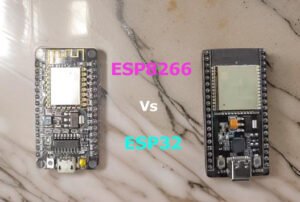The STM8S105C6T6 microcontroller is a powerful and versatile component that can be used for a variety of applications. It has a wide range of features and capabilities, making it an ideal choice for embedded systems. With its low power consumption, it can be used in a wide variety of environments. Its on-chip peripherals and memory make it easy to interface with other components, while its 16-bit architecture allows for high-performance applications. With its low cost and wide range of features, the STM8S105C6T6 microcontroller is a great choice for embedded systems. In this article, we will explore the capabilities of the STM8S105C6T6 microcontroller, looking at its features, development tools, and other considerations. We will also look at some of the applications that the microcontroller can be used for, as well as some of the best development boards available for the STM8S105C6T6.
STM8S105C6T6 microcontroller
The STM8S105C6T6 is a member of Texas Instruments’ low power, high performance STM8S microcontroller families. It is a 16-bit microcontroller that operates at a maximum frequency of 48 MHz. The microcontroller has a wide range of features, including more than 100 peripherals, 16 kB of flash memory, 1 kB of RAM, and a wide range of analog and digital interfaces. These features make the STM8S105C6T6 a great choice for a variety of applications.

Feature Introduction
- On-chip debug circuit;
- Clock, reset, and supply management;
- Wide range of communication peripherals;
- Low-power consumption (wait, active shutdown, shutdown);
- I2C and SPI interfaces;
- Advanced STM8 core, Harvard with 3-stage pipeline;
- Low Power Crystal Oscillator;
- External clock input;
- Clock security system with clock monitoring;
- Peripheral clocks can be turned off individually;
- Always-on low-power power-on and brown-out reset;
- Auto Wake Timer;
- UART with synchronized clock output, smart card, infrared IrDA, LIN interface;
- Features Single Wire Interface Module (SWIM) and Debug Module.
Performance Parameter
- 8-bit STM8S core with 16-bit CPU;
- Operates up to 16 MHz;
- 2 Kbyte of RAM;
- Two 16-bit Timer/Counter (TIM1);
- 10-bit ADC with up to 8 channels;
- 32 Kbytes Flash program memory;
- 16 I/O ports;
- 2Kb of EEPROM;
- 16-bit Timer;
- Clock speeds up to 16MHz;
- 3 comparators;
- SPI interface up to 8Mbit/s;
- I2C interface up to 400Kbit/s;
- 2 Kbytes data EEPROM;
- 2.95 to 5.5 Volt operating voltage;
- 10-bit A/D converter;
- Standby power consumption down to 0.5 µA;
- Package options: TSSOP20, QFN20, UFQFPN20;
- Operating temperature range: -40°C to +125°C.
Applications of the STM8S105C6T6
- embedded systems;
- wireless sensor networks;
- environmental monitoring systems;
- emergency alert systems;
- industrial control systems: pneumatic control systems or hydraulic systems.
Development Tools and Considerations
Most microcontrollers are programmed using a C or C++ programming language. When using the STM8S105C6T6, it is best to use the C programming language. The source code should be compiled using the 8-bit C compiler. The compiler runs on the Texas Instruments Integrated Development Environment (IDE) tool called Code Composer Studio (CCS). CCS is an IDE that is compatible with many of Texas Instruments’ processors, including the STM8S105C6T6.
The microcontroller can also be programmed using a variety of other languages, including GCC, MATLAB, and VisSim. MATLAB and VisSim are great for creating simulation models, but are not ideal for creating low level code for microcontrollers. For this type of programming, it is best to use the C programming language.
Development Boards for the STM8S105C6T6
When developing applications for the STM8S105C6T6, it is best to use a development board. A development board makes it easy and convenient to interface with the microcontroller’s peripherals and program it. It also makes it easy to do debugging and testing, as it allows the microcontroller to be used in a real world environment. There are a number of different development boards available for the STM8S105C6T6. These boards are designed to make it easy to interface with the microcontroller and provide additional functionality. They come with a variety of features, including USB, Ethernet, wireless communication, and other interfaces. They also come with a wide range of peripherals, making it easy to add functionality to the system.





